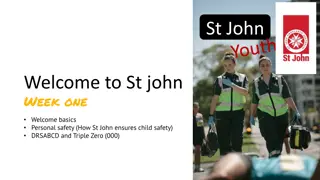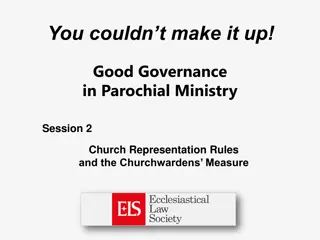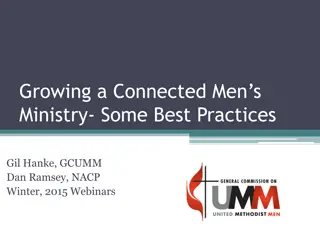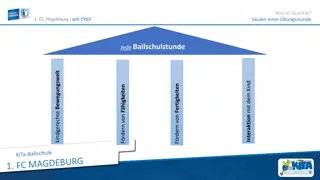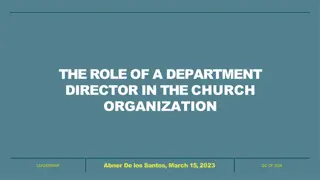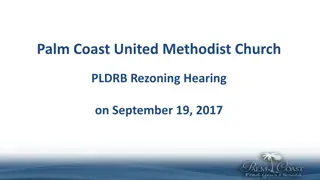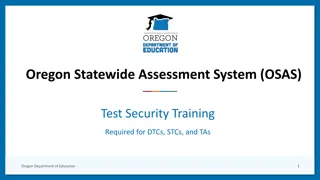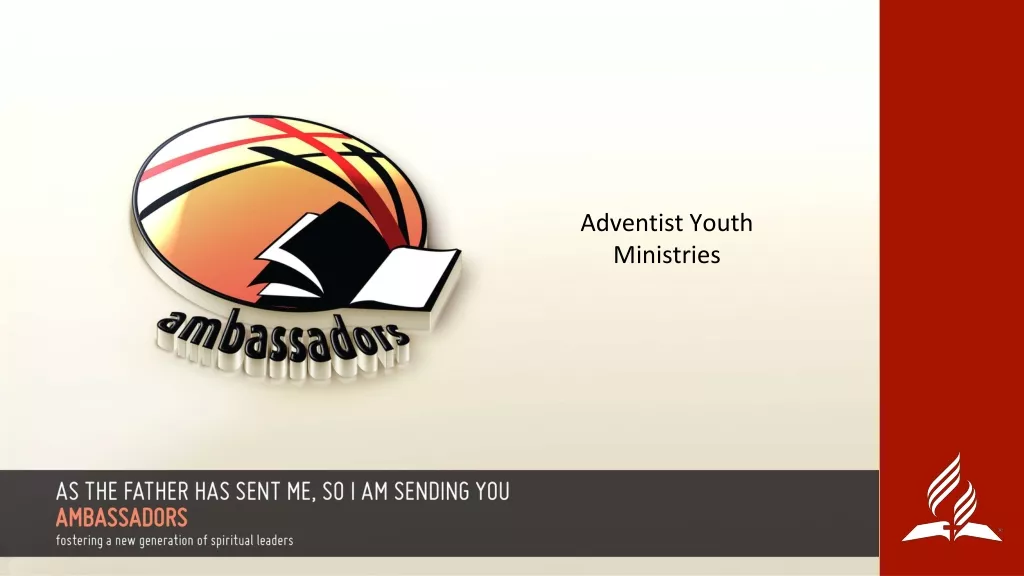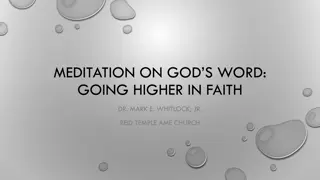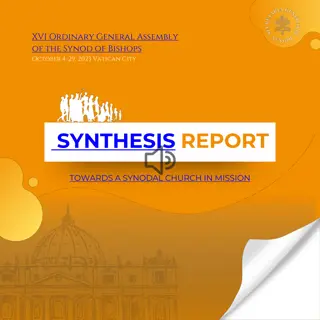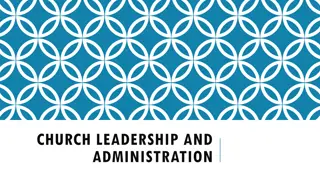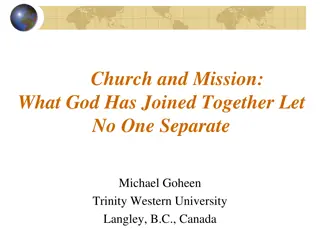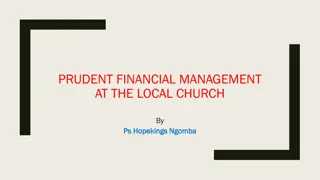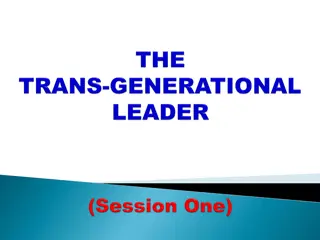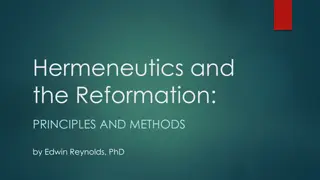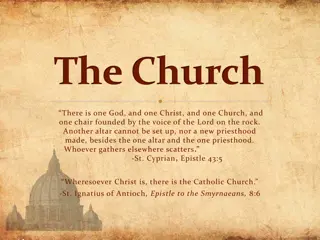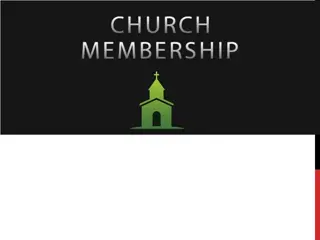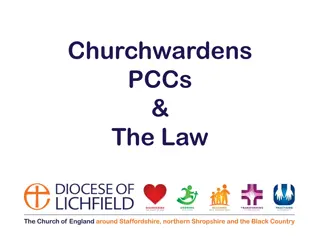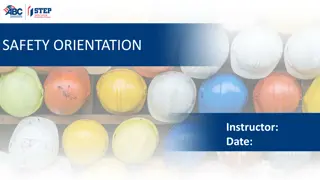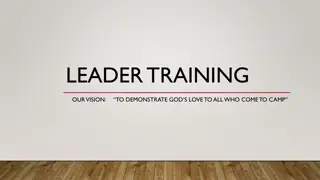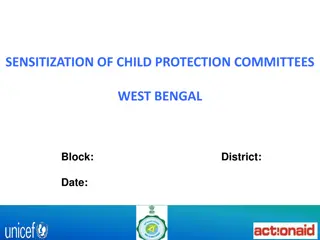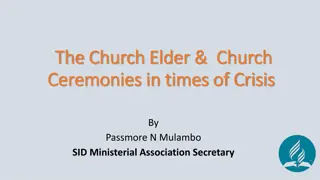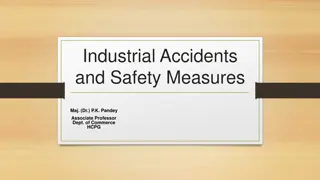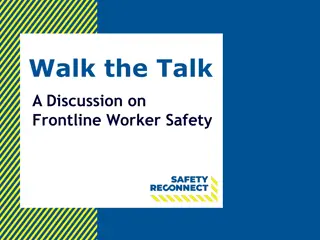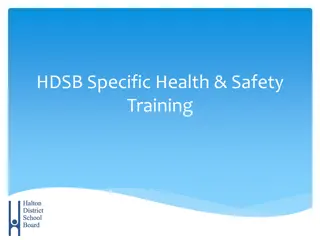Ensuring Child Safety: Creating a Secure Environment in the Church
This presentation by Phil Morrison at the Sanga Pastors' Conference discusses the importance of creating a safe space for children in the church, emphasizing the lap of Jesus as the safest place. Referring to Mark 10:13-16, it explores what a safe place looks like and the measures needed to protect children in a religious setting.
Download Presentation

Please find below an Image/Link to download the presentation.
The content on the website is provided AS IS for your information and personal use only. It may not be sold, licensed, or shared on other websites without obtaining consent from the author. Download presentation by click this link. If you encounter any issues during the download, it is possible that the publisher has removed the file from their server.
E N D
Presentation Transcript
Sanga Sanga Pastors Conference Presenter, Phil Morrison
Child Safety in the Church: Session Two
Creating a Safe Place for our Children
What does a safe place look like?
What would be the safest space for a child?
The lap of Jesus! Look at Mark 10:13-16
The lap of Jesus was safe because it was a place of protection.
Have we made our churches, our congregations, and our schools places of protection from child abuse, for our children?
The lap of Jesus was safe because it was a place of acceptance.
Are our churches welcoming and accepting of children?
The lap of Jesus was safe because it was a place of affirmation.
Are our churches and schools safe places that affirm the value and worth of our children?
The lap of Jesus was safe because it was a place of blessing.
Are our churches safe places where children receive a blessing and are blessed by our intentional watch care for their protection?
Policies and Procedures
The Goal of Policies and Procedures
To implement Child Safety Prevention Principles:
The Value of Policies and Procedures
They are educational
They are protective
They give guidance
They may soon be required
The Republic of Kenya, County Child Protection Systems Guideline states:
Organizations providing services to children shall prove their commitment to upholding child protection standards by developing child protection policies
All staff, whether in direct or indirect contact with children shall sign a statement of commitment to child protection as part of their employment contracts
These shall include police officers, teachers, doctors and nurses, all other state and non-state actors (NGOs, CBOs, faith communities) coming into contact with children in the line of their duty.
In Tanzania UNICEF is working to develop similar laws
They are working closely with the government on the development and implementation of a National Plan of Action to Prevent and Respond to Violence against Children, involving the police, justice system, health and social welfare services, HIV/AIDS sector, education and civil society
This multisector plan reflects work that is ongoing to strengthen child protection systems and seeks to support and expand upon existing national efforts to prevent and respond to all forms of violence, abuse and exploitation against children. Child Protection, https://www.unicef.org/ tanzania/ChildProtection_factsheet.pdf
This multisector plan reflects work that is ongoing to strengthen child protection systems and seeks to support and expand upon existing national efforts to prevent and respond to all forms of violence, abuse and exploitation against children. Child Protection, https://www.unicef.org/ tanzania/ChildProtection_factsheet.pdf
So for the safety of our children and compliance with the regulations that may be coming let us, in our denomination and in our local churches, put in place policies and procedures as soon as possible.
A Sample Policy
According to WHO and Tanzanian Law: 18years and under.
Child sexual abuse is the involvement of a child in sexual activity that he or she does not fully comprehend, is unable to give informed consent to, or for which the child is not developmentally prepared and cannot give consent, or that violates the laws or social taboos of society Definition of Child Sexual Abuse
Child sexual abuse is evidenced by this activity between a child and an adult or another child who by age or development is in a relationship of responsibility, trust or power, the activity being intended to gratify or satisfy the needs of the other person. Definition of Child Sexual Abuse
This may include but is not limited to: the inducement or coercion of a child to engage in any unlawful sexual activity; the exploitative use of a child in prostitution or other unlawful sexual practices; the exploitative use of children in pornographic performance and materials. Definition of Child Sexual Abuse
World Health Organization, 2003, Guidelines for medico- legal care for victims of sexual violence, Definition of Child Sexual Abuse Accessed January 5, 2015. http://whqlibdoc.who.int/publications/200 4/924154628x.pdf.
The term worker would include anyone involved in a church ministry (Sunday School, Vacation Bible School, Church camps, etc.), a church sponsored school, in overnight activities involving minors, in counselling of minors, or in one-on-one mentoring of minors. Definition of a Worker
Workers: Requirements
Requirements for Teachers: Must be a member as the local church defines it. Must be born again and evidencing Christian growth and maturity. Must regularly attend worship services and church events and not only be involved in the Children s Ministry functions.
Requirements for Assistants: A non-member, as the local church defines it, may be an assistant worker. Must be a person who is born again and evidencing Christian growth and maturity. Must regularly attend worship services and church events and not only be involved in the Children s Ministry functions.
Requirements for Workers: Six Month Rule. No person will be considered for any ministry position involving contact with minors until she/he has been involved with the church for a minimum of six (6) months.
Requirements for Workers: This is a time of pre- qualification which provides opportunity for interaction between our leadership and the applicant allowing for better evaluation and suitability of the applicant for working with children.
Age Requirements All teachers must be at least 18 years of age.
Probationary Requirements All new teachers and assistants (both adult and teenage) will go through a probationary period of four months under the supervision of an approved teacher.
Workers: Screening
Workers: Screening All persons who desire to work with the children participating in our programs and activities will be screened.


